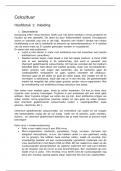Samenvatting
Summary course Nudge: influencing behavior
This document contains a summary of all study materials of the course Nudge: influencing behavior. This course is part of the minor: Understanding and influencing decision making in business and society. This document summarizes all lectures, guest lectures, knowledge clips, and additional mandator...
[Meer zien]













